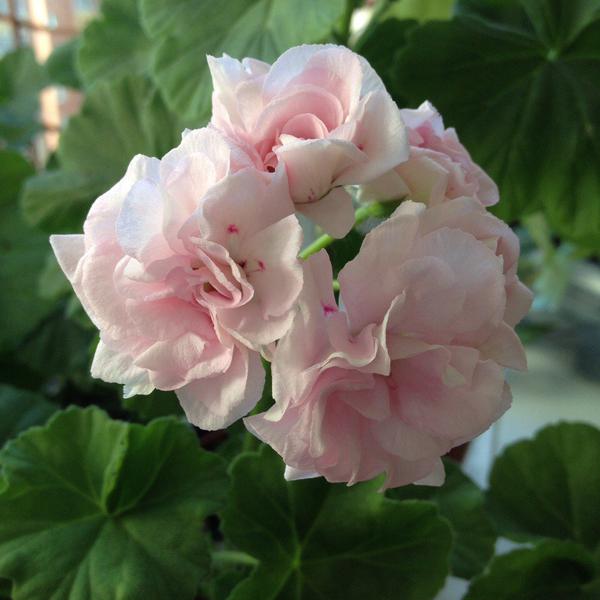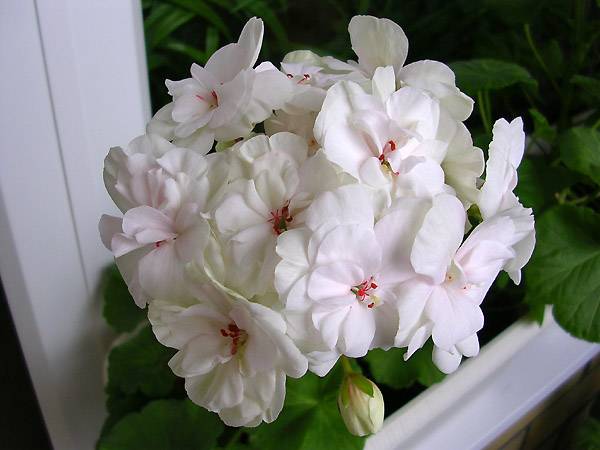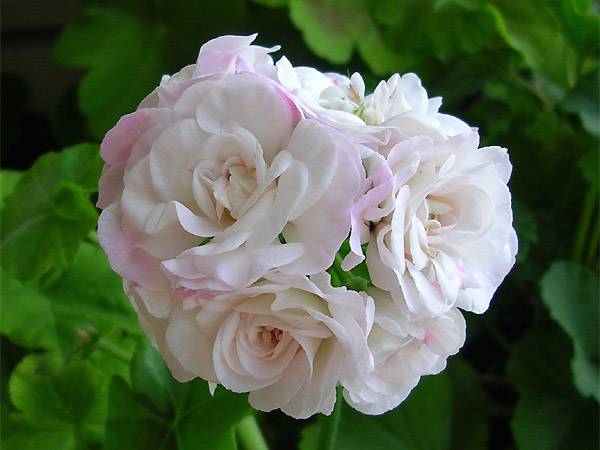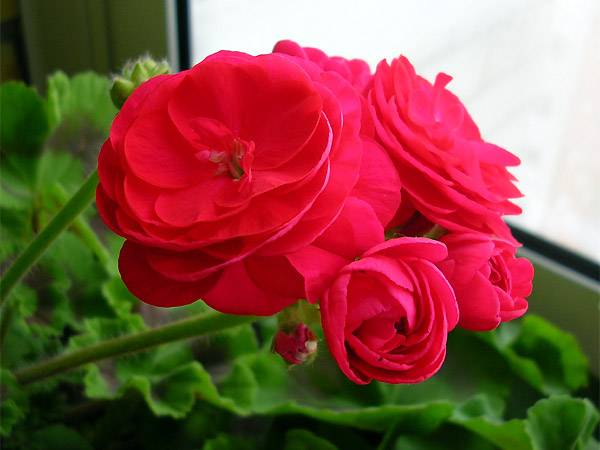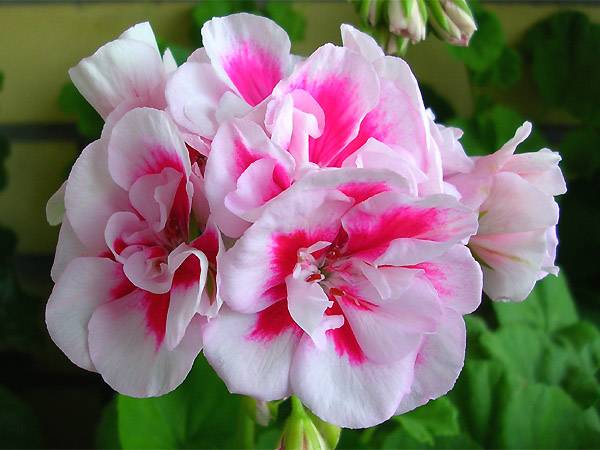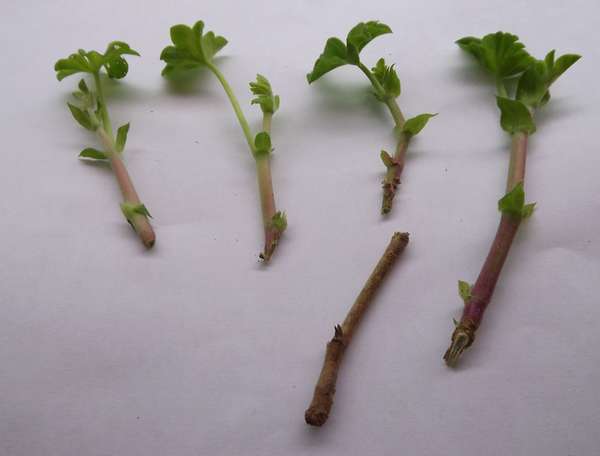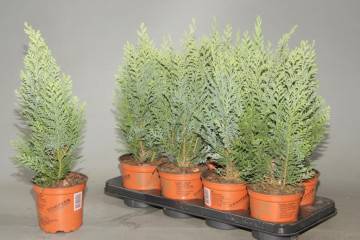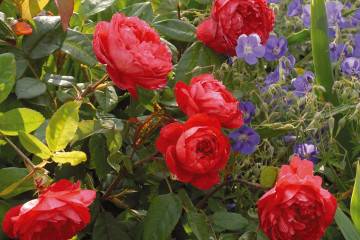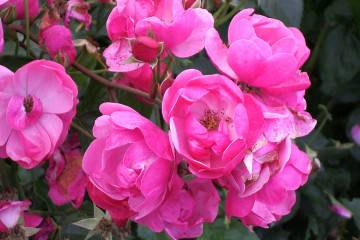Pelargonium PAC Viva Madeleine, Carolina and other varieties
Content:
Pelargonium PAC Viva Madeleine has gained popularity among flower growers due to its abundant flowering and ease of maintenance. The plant easily fits into interior compositions, decorating not only apartments, but also offices.
Pelargonium PAC Viva - what kind of flower is it?
The flower (Pelargonium) is a member of the Geranev family. It has many varieties, some of which are perennials, the rest belong to shrubs and succulents.
Brief description and history of origin
Pak viva madeleine pelargonium was brought to one of the exhibitions by Swedish breeders. There she received positive reviews and became a prize-winner of many flower festivals, including those held in Russia (2012).
Houseplant varieties with names
Geraniums have several varieties that attract attention with their unusually beautiful flowers.
PAC Viva Madeleine
Pelargonium Viva Madeline is distinguished due to its compactness. It has medium-sized foliage with a dark green tint. The bushes have the correct shape, the flowers are white with a slight pinkish tint.
PAC Viva Carolina
The plant has large buds, painted white with a pale lilac tint. Inflorescences grow densely, on the surface there is a slight hairiness. Each umbrella consists of 5-6 flowers, the leaves have a dark green color. Carolina blooms profusely, which is very different from its relatives.
PAC Viva Rosita
The petals of the buds are painted in a coral or bright pink tone, the foliage has a lighter shade than that of the rest of the genus. Each inflorescence has 5 to 7 flowers, the plant is distinguished due to the lush and dense flowering.
Pac viva maria
The peculiarities of the species include the unusual color of the buds - a mixture of pink and white flowers. Initially snow-white at the base, the petals turn bright pink by the middle of the process. Medium-sized foliage has a rich green hue.
How to care for Viva at home
Viva Madeleine Pelargonium adults do not require close attention. It is not difficult to take care of them, it is enough to water, spray in a timely manner and choose the right permanent place.
Illumination and temperature conditions
Madeline's pelargonium has no craving for bright light, she prefers to be in partial shade. In good weather conditions, it can be taken out onto a loggia or balcony. For the normal development of a flower, it is necessary to adhere to a temperature regime from 22 ° C to 26 ° C.
Watering rules and humidity
Frequent wetting of the soil can cause rotting of the root system. Watering is carried out as the earthen coma dries. To prevent stagnation of water in the pot, there must be drainage holes.The humidity in the room should be of average values, the plant needs regular ventilation. Compliance with these conditions will help prevent attacks by diseases and parasites.
Top dressing and soil quality
The care description indicates that planting requires a special mixture for Geraniums, which is sold in flower shops. In its absence, the soil can be prepared independently by mixing 2 parts of turf, 1 part of peat and sand.
Top dressing is carried out from spring to late autumn, with special store fertilizers. The procedures are performed 1-2 times a month; in winter, the plant does not need them.
Flower container size
The pot must be of sufficient volume, at least 2 liters. If the root system is pinched, then the growth of the culture slows down, and the buds begin to dry.
Pruning and replanting
Pruning is carried out annually, leaving shoots with 3-4 nodes. This approach will allow you to get a lush and beautiful bush. If yellowed or dried leaves are found the rest of the time, they are also carefully cut off. So that rot does not form at the cut site, the areas are sprinkled with crushed charcoal. Pruning is carried out without affecting the base of the cutting.
A transplant is needed every year for young plants, adult specimens are transplanted with an overgrown root system. With each manipulation, the bottom of the boxes is covered with drainage, a special soil mixture is poured on top.
Features of flowering plants
This variety blooms early. Distinctive features of the culture are the long preservation of the appearance of the inflorescences and a slight loss of petals, which dry in the buds.
A period of activity and rest
In winter, the plant is sent to a darker place, the watering regime is halved. At this time, the flower rests, its activity begins with the onset of heat.
Types and shape of flowers
On one inflorescence, from 5 to 30 flowers with a diameter of 5-6 cm can form. A loose fit allows you to consider each rose. The flower stalk is strong, growing slowly. Such development pays off with long flowering up to two weeks.
Flower propagation process by cuttings
Cuttings 5-7 cm long with 3 leaves are pre-dried and planted in small containers with a pre-prepared substrate. After planting, the soil is moistened, placed in a well-lit place. Regular watering will help the plant to form roots quickly, after which it is transplanted into a larger pot.
Growing problems, diseases and pests
Violation of the rules of agricultural technology leads to the emergence of:
- heaving fungus. It is determined by the characteristic reddish spots on the foliage. The disease causes drying and shedding of leaves. Treatment is carried out with fungicides;
- black legs. The bacterial parasite provokes a blackening of the stem near the base. Get rid of the disease with fungicides;
- gray rot. Spots and plaque spread throughout the bush, the disease occurs at low temperatures. Prevention consists in improving ventilation and increasing the temperature in the room;
- swelling of the leaves. It is manifested by small changes in the structure of the sheet plate. The disease is provoked by insufficient lighting and high humidity. Treatment involves a change of soil and additional drainage in tanks.
Flowers can be amazed:
- aphids;
- caterpillars;
- whitefly;
- termites.
The fight against parasitic insects is carried out by a marathon, an installer, a messenger.
Proper care of the Geraniev family will help grow beautiful, regularly flowering bushes. If you ignore the recommendations for illumination, air temperature and the regularity of watering and dressing, the plant may die.
